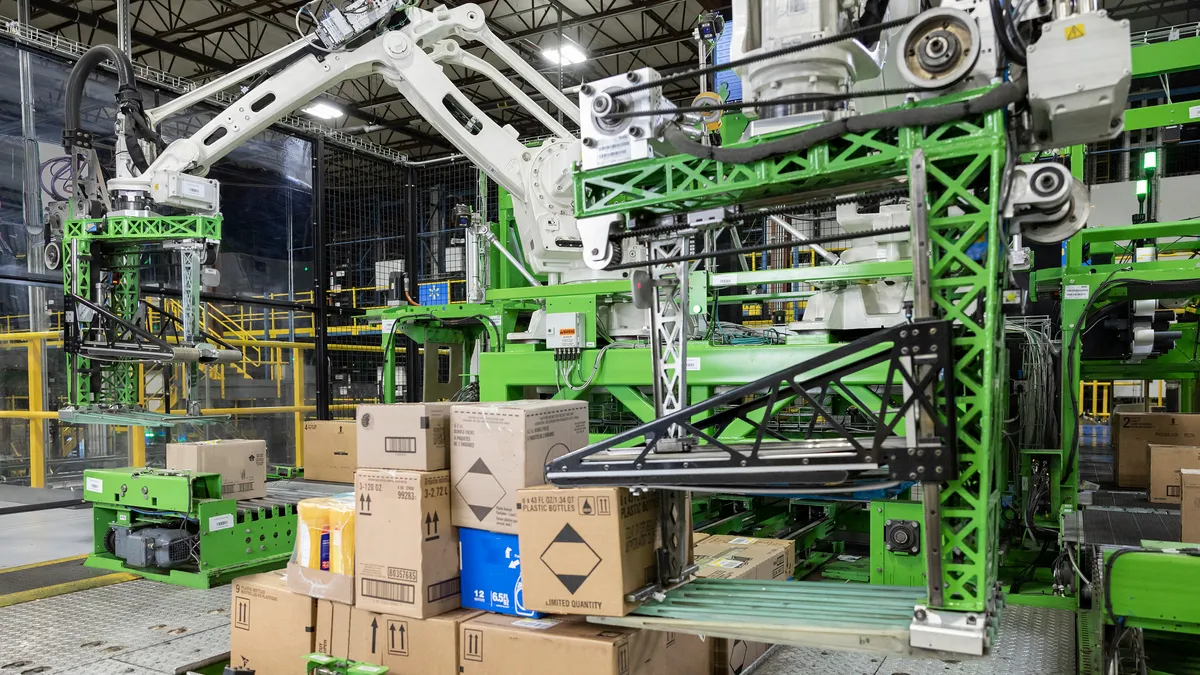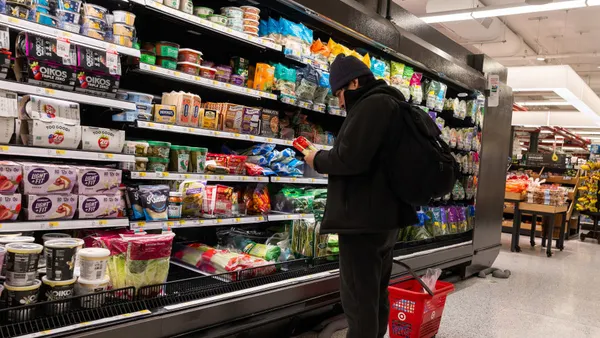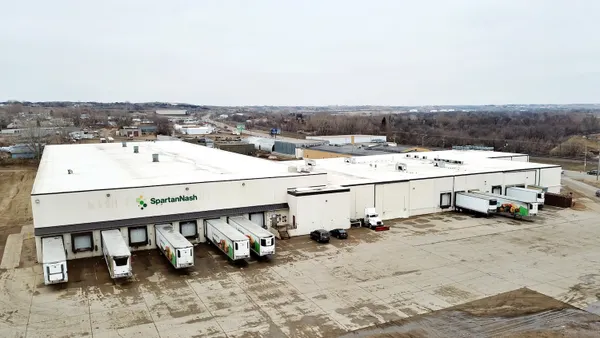Dive Brief:
- Supply chain leaders need to make investments in automation and labor retention programs to secure business continuity, maintain service levels and reduce cost variations, according to a new report from the FMI – The Food Industry Association and Boston Consulting Group.
- A variety of automation options ranging from receiving and put away to picking and packing can provide different labor productivity increases at facilities, according to the 2023 Supply Chain Benchmarking Report.
- The report’s focus on the supply chain comes at a time when the trade group and consulting firm expect service performance to bounce back in 2023 after supply chain challenges in recent years.
Dive Insight:
Suppliers faced headwinds in 2022 with volatile demand but now are seeing demand lessen from retailers.
The recent softening demand is allowing CPGs to recover from their previous capacity constraints. But at the same time, operating cost increases are outpacing revenues, putting margin pressure on CPGs. As a result, CPGs are seeking more ways to make their businesses more efficient, per the report.
“Much of the increased operational burden for maintaining service levels has been shifted upstream to CPGs,” the report noted.
While nine in 10 of large publicly traded retailers analyzed for the report grew earnings before interest and taxes (EBIT) dollars in 2022, only three in 10 of large publicly traded CPGs did the same. Retailers have also been making strides in making their store models more labor efficient.
Supply chain leaders need automation and labor retention programs to build on that progress, the report says. FMI said the report, which is based on a 2023 survey of 12 CPGs, four wholesalers and nine retailers, is geared toward supply chain, merchandising and sales executives responsible for managing complexity and leading change on the demand and supply side.
Employee turnover remains high for CPGs and retailers with higher paying jobs elsewhere, dissatisfaction at work and poor performance as the top three reasons for turnover for both. However, “culture” and leadership” were ranked higher at No. 4 and 5, respectively, for CPGs compared to retailers, who saw those land at No. 6 and 7.
Retailers tend to see a higher median turnover rate among warehouse employees (76%) compared to CPG players (61%). CPGs saw their rate almost split between involuntary and voluntary exits, while retailers saw a nearly 1:6 ratio.
The report noted that retailers have reduced their supermarket labor hours by adapting their staffing and labor models, particularly in labor-intensive departments like fresh prepared and deli.
Autonomous forklifts with navigation capability, robotic case packer technology and a vertical lift module solution with an automated crib storage system can each provide a 2X-3X labor productivity impact, per the report. Meanwhile, an ASRS system of multiple shuttle robots and elevators can have a 5X-10X impact.
Investments in AI, machine learning and optimization solutions can help lay the foundation for accelerating digital capabilities, per the report.
Next-gen sourcing can use artificial intelligence and other digital tools to analyze spend, support negotiation and ensure efficiency, while trade partner collaboration can embed integrated capabilities to optimize the end-to-end ecosystem across partners, the report said.
“Supply chain leaders are identifying opportunities across the value chain to improve operational efficiency, costs, and better enable enterprise business strategy,” Doug Baker, FMI’s vice president of industry relations, said in a blog post.














